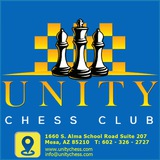He should not allow Black to open lines for his rooks; instead, he should prefer 20.bxa5 bxa5 21.Nd4, with chances of equalising.
The pawn stands slightly more actively, taking c4 from the white knight, and opening a path to b6 for the bishop.
24.Nc2 Ra2 25.Nb3 Rc8 26.Ncd4 Bd8! 27.Rxc8 Bxc8 28.Rc1 Bd7 29.Kh1 Qa8 30.Bh4 Bb6 31.Qd1 31...Qa4 32.Be1 h6
33...e5! 34.fxe5 Ng4 35.Be1 dxe5 36.Nf5 Bxf5 37.exf5 Rxg2 38.Rc8+ Kh7 39.d4 Rxh2+ 40.Kg1 Bxd4+
Unity Chess Club
Jacek Gdanski 2395 Boris Gelfand 2585 Adelaide Wch 1988 Black to move
The knight jump into d3 is natural and strong – Black gets the two bishops and active piece play. But in view of the fact that White will have to part with his light-squared bishop, Black first provokes a weakness:
If 17.bxc5 Bxa1 18.cxd6 Qxd6 19.Nxb7 Qe7 20.Nc5 Rb8 21.Nb3 Qf6 22.Kf2 Bc3 23.Qc2 0-0, White does not get full compensation for the exchange.
Better was 22.bxc5, strengthening the position in the centre. However, because of the weakness of the kingside light squares, the advantage would still lie with Black.
With such a bishop, White has to surrender a rook, and the rest is a matter of technique.
25.Bf2 Qh3 26.Rxe4 Rxe4 27.Qxd3 Rxf4 28.d7 Rh4 29.Rc8 Qxh2+ 30.Kf1 Qh3+ 31.Ke2 Qe6+ 32.Kf3 Rh5 33.Nb6 Rf5+
